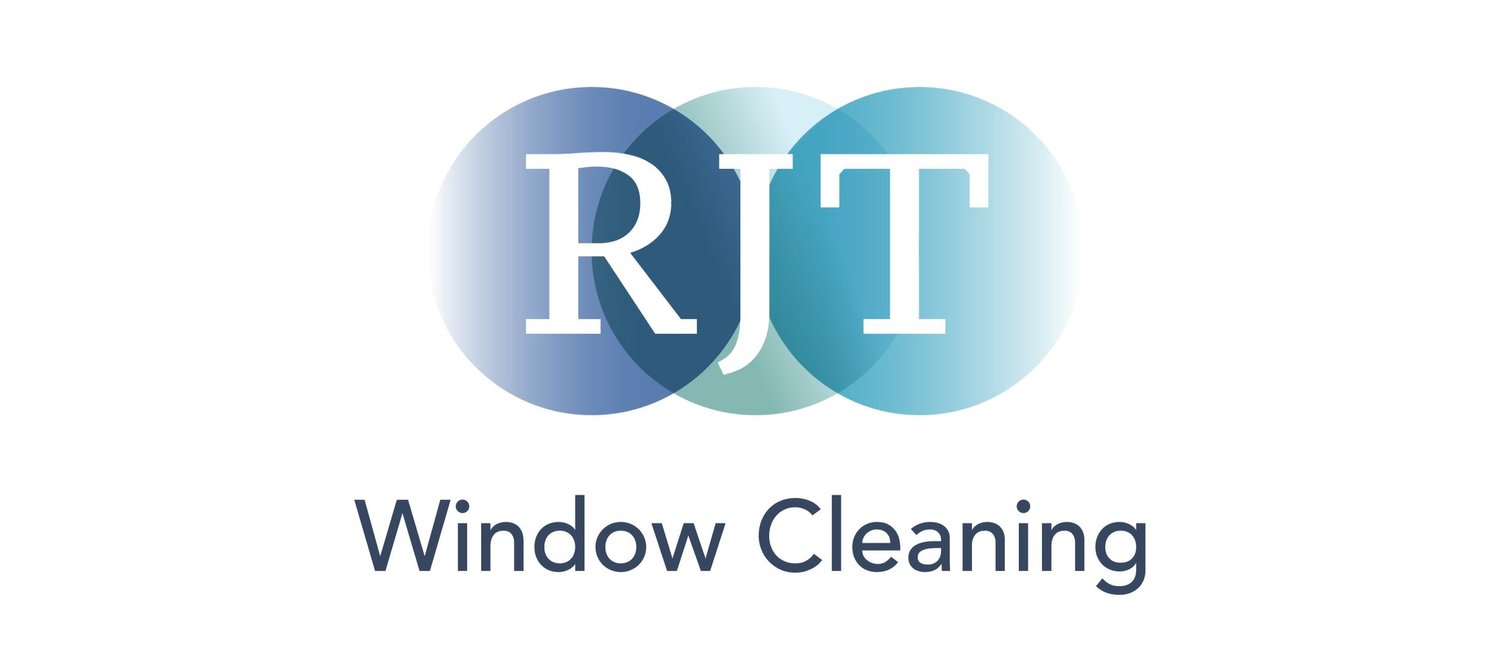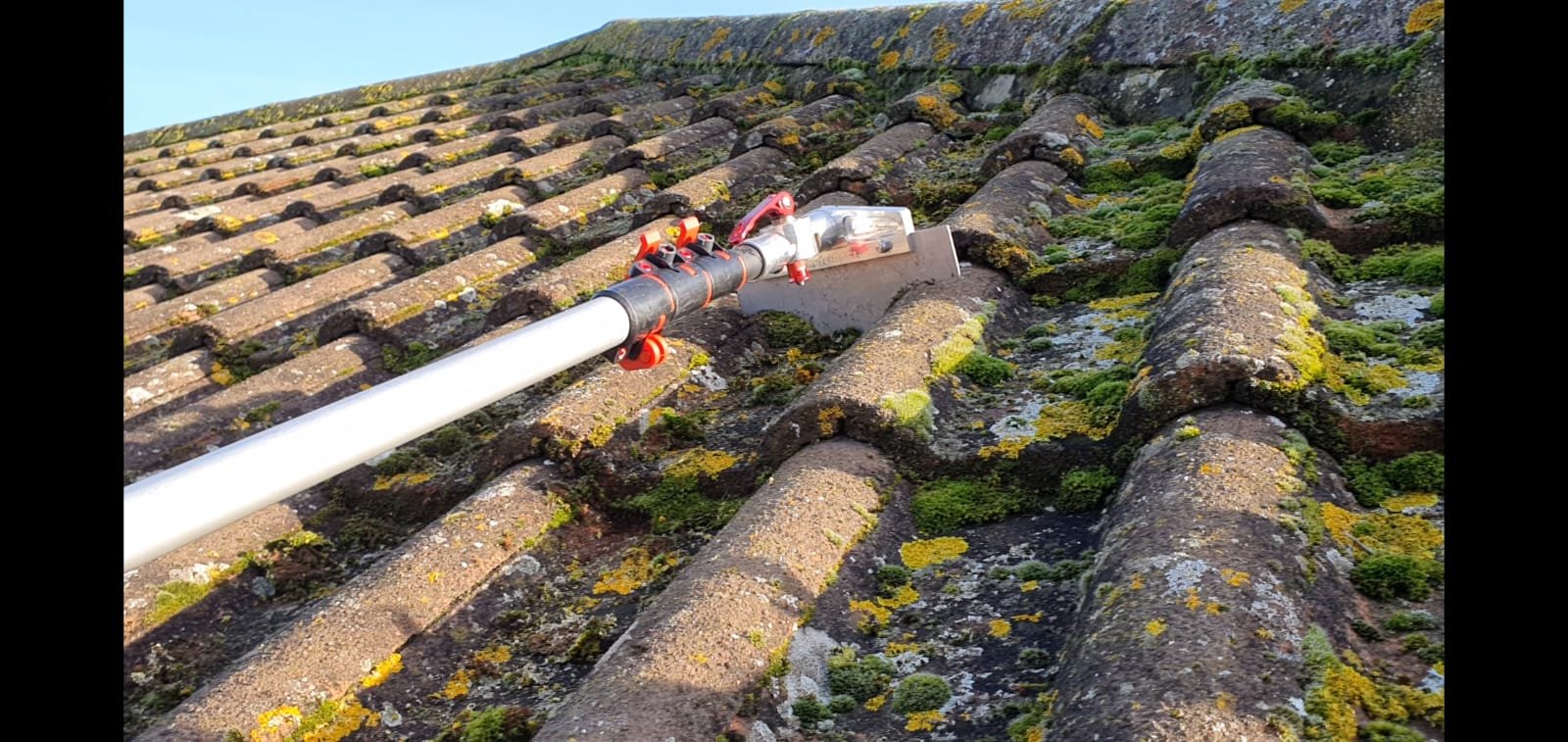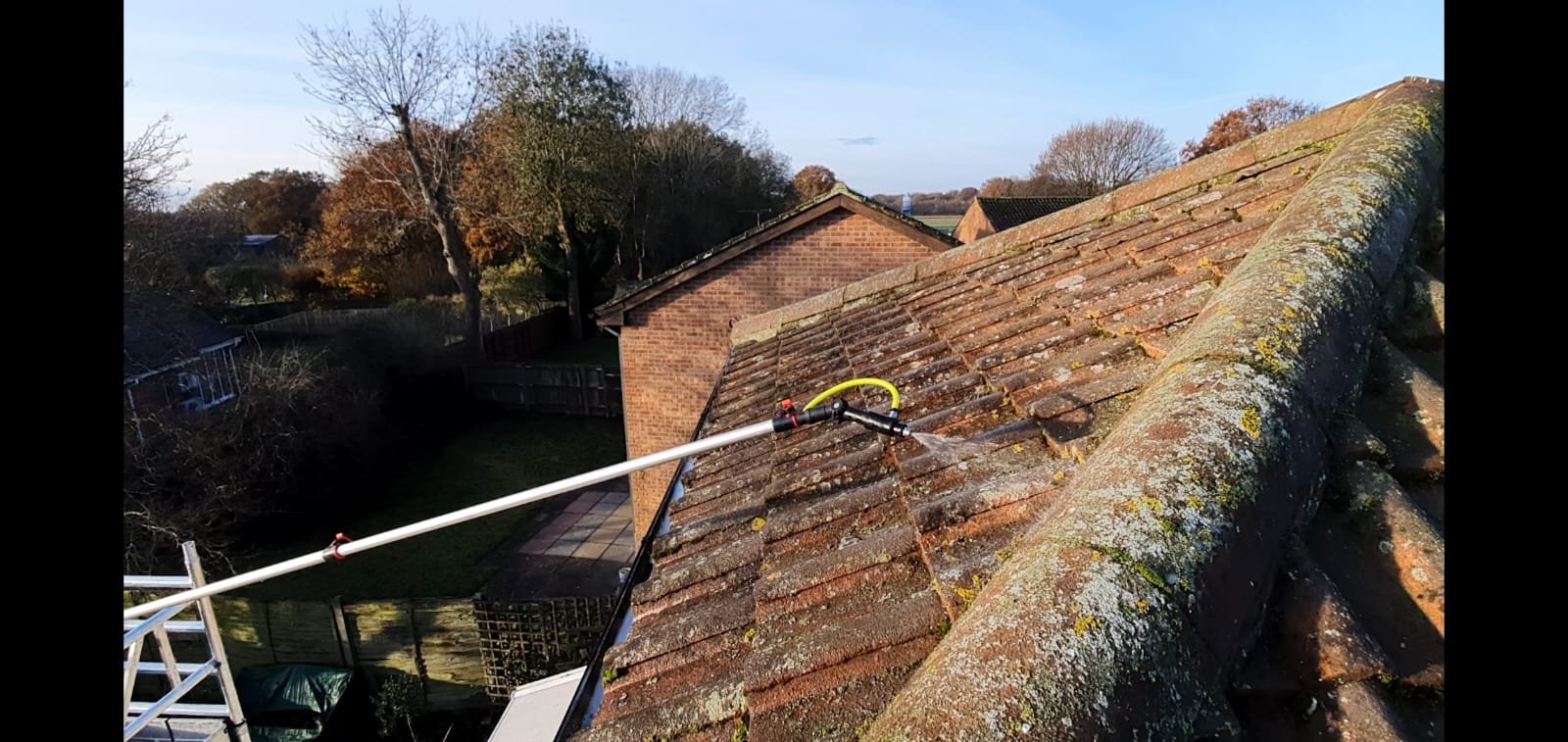Everything you need to know about roof cleaning -Part 2
This is the second of our blog posts answering common questions about roof cleaning. This post is all about methods for cleaning roofs, their pros and cons, access requirements and how to prepare your property prior to roof cleaning.
To find out why it may be necessary to get your roof cleaned and how much it might cost, check out Part 1 of these blog posts.
How to clean a roof
There are generally 3 approaches to cleaning a pitched, tiled roof the UK:
Scrape and biocide
Pressure washing
Steam cleaning.
Scrape and biocide
Let’s look at the scrape and biocide method first as this is generally the gentlest and safest option for cleaning a roof.
With this approach, larger chunks of moss or algae are removed using specialised roof scraping tools. These tools come in a variety of profiles to fit all shapes of roof tile. Once the bulk of the biofilm (i.e. the community of microorganisms such as moss, algae, lichen and bacteria found on your roof) has been removed, the roof is sprayed with a biocide treatment which finishes the job.
The biocide will kill any remaining growth and spores on the roof within the first hour or so after application. Natural weather cycles will then dislodge and disperse the remaining dead organic matter from the roof over a period of months.
It may take several weather cycles - getting soaked, drying out and repeating - for the roof to appear fully clean as different organisms fall away at different rates. For example, moss remnants will decay and disperse quickly while lichen will die quickly yet may require multiple weather cycles to detach from the roof.
We outline how long the effects of scraping and treating with biocide last in Part 1 of this blog post pair and discuss the different types of biocide used in roof cleaning later in this post.
Pressure Washing
Pressure washing a roof requires careful consideration as it is the most aggressive method of cleaning a roof and can damage roof tiles. Indeed, a quick Google search may suggest that it is never a good idea to pressure wash a roof. However, it can be done sympathetically, using the minimum required pressure, and there are some roofs and types of tiles that may withstand this approach.
When to avoid pressure washing a roof
If the roof in question is in a bad state of repair, pressure washing isn’t a recommended option. You could end up with leaks or risk causing further damage to an already deteriorating roof by dislodging tiles or blasting away already weakened cement bonds.
Some roofs have been painted to alter their appearance and some roof tiles have a coating of colour applied during manufacture. The paint or coating may be removed during pressure washing, causing discolouration of the tiles or a shading effect and, as such, we would not recommend using pressure washing on these types of tiles.
Tip - If the edge or under side of the tile is a different colour than the top then your tiles are likely colour coated and pressure washing should be avoided.
Some tiles have a grainy coating, a bit like sandpaper, which can be blasted away by pressure washing. In America, shingle is the most popular roofing tile material and is covered in these rough granules. In the UK this kind of coating is commonly applied to concrete roofing tiles. This sandy coating provides some extra resistance to UV, mechanical damage and natural weathering. These granules will naturally and gradually be washed away over the lifetime of the roof but pressure washing can speed up this process so, again, we would not recommend pressure washing these types of tiles.
Another word of caution on pressure washing a roof
Another potential downside of pressure washing a roof is that it can be very messy as organic matter dislodged from the roof gets sprayed everywhere. This means that the whole building, windows and surrounding area will likely need a good rinse down afterwards.
When to consider pressure washing
Pressure washing clay tiles
In the UK, there are many roofing tiles that are not painted or colour coated, and do not have a granule effect (for example: smooth concrete, clay or slate tiles). So, if you have these tiles on a structurally sound roof and you’re not put off by the potential mess, pressure washing could be a viable option for cleaning your roof.
The benefits of pressure washing in these scenarios are:
instant results: the roof will appear clean even before the biocide is used
easier to reach areas of a roof with trickier access.
Steam cleaning
Steam cleaning is very similar to pressure washing but heat is added to the pressure washing system (usually be way of a diesel burner) increasing the water temperature to up to 150°C. The addition of heat means that a lower pressure can be used, making it a gentler option than pressure washing. Additionally, there is also less water to contend with because most of the water ends up as steam which vaporises, decreasing the risk of water ingress.
In theory, the high temperature of the steam will also kill off more of the organic growth on contact, giving instant results. We would still always advise still spraying the roof with a biocide treatment afterwards to ensure thorough results and extend the lifetime of the clean.
Like pressure washing, there is a risk of mess to walls, windows etc which may need to be cleaned afterwards. However, the extent of the mess may be somewhat reduced as less water (and more steam) is used.
Roof being sprayed with biocide after being scraped. We also advise biocide application after pressure washing and steam cleaning.
Access requirements for roof cleaning
All the above methods will generally require some form of access equipment to safely reach the eaves or gutter level of the roof. All the work can then be carried out from this height using equipment attached to long telescopic water fed poles (roof scrapers also attach to these poles). Climbing on the roof or using roofing ladders is therefore usually unnecessary.
The most cost-effective access arrangement is often a small mobile scaffold tower. Ladders can sometimes be used if they are tied in to the building securely or cherry pickers can be used if they can get close enough to the building.
A combination of these access arrangements may be necessary for some roofs.
Access equipment set up for a bungalow roof clean.
Preparing for roof cleaning
In all cases, it is good practice to block gutter downpipes in order to stop them becoming blocked by the organic matter being cleared from the roof. This can be done with wire mesh balloons or a tennis ball. (As an aside, all gutters should be cleared after the roof has been scraped, steam cleaned or pressure washed too.)
If there is a lot of moss on the roof, it may be advisable to lay groundsheets around the property to catch falling debris and make it easier to clear up.
Occasionally, plants, ponds and paving may need to be protected from biocide damage.
When using biocide, it may be necessary to protect nearby plants from spray (e.g. with plastic sheeting), although it is often sufficient to pre-soak these plants with water and thoroughly rinse them again with water afterwards. If damage to plants does occur, it will be limited to the point of contact, with the extent of damage depending on the reach and intensity of the spray or spill. Grass will recover well within a few days of coming into contact with biocide while petals on flowering plants will die.
Similarly, it’s important not to let DDAC biocide (see below for more on the different types of biocide) dwell or dry on sandstone so pre-soaking and rinsing with water may be required on certain patios or paths.
Biocide is dangerous to pond life so it’s important to avoid spraying directly into fresh water or ornamental garden ponds. Generally, its straightforward to avoid ponds but if there are concerns ponds could be lightly covered while the biocide is applied.
If water butts are attached to gutter downpipes, then these should be detached to avoid contamination with biocide.
What is biocide and is it safe to use?
There are two types of biocide that are commonly used on roofs in the UK:
Didecyl dimethyl ammonium chloride (DDAC)
Sodium hypochlorite (known in the industry as hypo)
DDAC
DDAC is the gentler of the two biocide options. It reacts only with living organisms and not with organic substrate material i.e. roofing timbers.
It will not oxidise or interact with any materials, sealants, fixings used in the manufacture of the roof. It does not contain bleach so will not discolour anything and is safe to use on metals such as lead work aluminium or tile fixings.
DDAC degrades on contact with living biomass so it deactivates quickly as it drains away from the roof and can’t migrate into the ground.
Sodium hypochlorite (Hypo)
Sodium hypochlorite is the main ingredient found in household bleach. It is used in a more concentrated form for industrial applications and is typically used to clean patios and driveways as well as being used in the treatment of swimming pools and drinking water.
Because it is bleach based it does have the capability to discolour some materials. It is also corrosive to most metals so contact with lead work or metal fixings should be carefully managed either by pre-soaking/rinsing or avoiding contact altogether.
DDAC biocide is safe for use on thatch.
Although a greater degree of care is needed, the main advantage to using hypo is that you will get instant results when using the scrape and biocide method: the roof will appear clean on the day. With DDAC-based products the cleanse process may take months before it is fully complete.
What about thatch?
DDAC biocide is suitable for cleaning thatched roofs. Pressure washing and hypo should be avoided.








